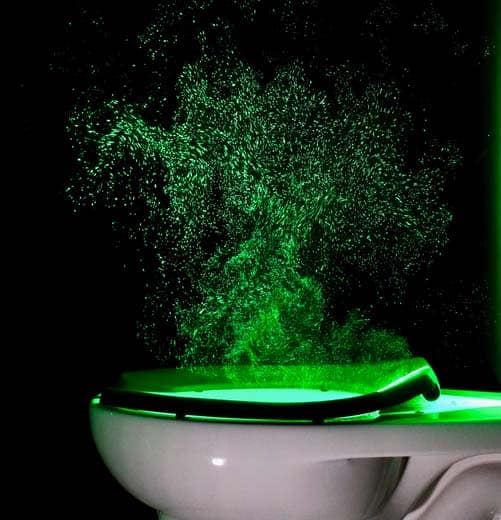One of the latest studies conducted by CU boulder engineers at the University of Colorado was an experiment using green light to flush the toilet. The results revealed how tiny invisible droplets in the toilet were quickly released into the air at a distance of 2 meters when the toilet was lidless. These aerosolized particles are known to transmit disease and can pose a risk of bacterial and viral transmission.
The release of aerosol particles after toilet flushing poses a health risk as it can spread many viruses such as E. coli or norovirus, or communicable viruses that cause diarrhea and vomiting, which affects users.
The study was conducted on a commercial toilet like the majority of public toilets in North America. The researchers used only tap water and no toilet paper or solid waste.
“We expected these aerosol particles to just kind of float up, but they came out like rockets,” Crimaldi said. The footage looks like a rocket dispersing, although the actual velocity of the particles was measured at 6.6 feet (2 meters) per second while within eight seconds after flushing the toilet reached 4.9 feet (1.5 meters) above the toilet as shown.

To minimize risks, the following should be done:
Close the toilet lid before flushing: This can help stop water droplets from coming out of the toilet.
Maintain hygiene: Wash your hands thoroughly with soap and water after using the toilet to reduce the risk of disease transmission.
Ensure proper ventilation: Proper ventilation in your bathroom can help spread and remove bacteria and viruses more effectively.
Regularly Clean and Disinfect Surfaces: Routinely cleaning and disinfecting bathroom surfaces, including toilet covers, can help reduce the presence of pathogens.


